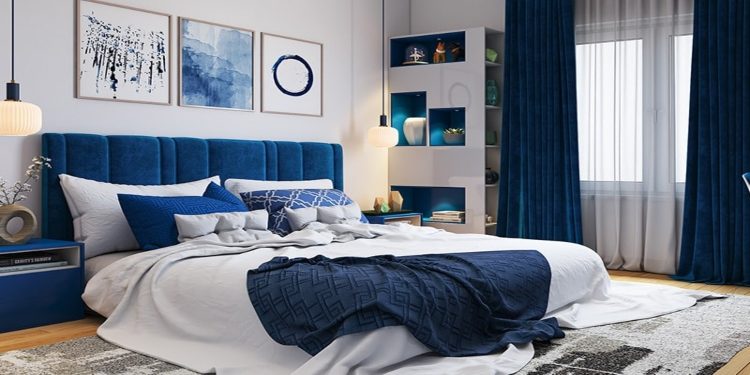Introduction:
Colour has the remarkable ability to influence our mood, emotions, and perceptions. Nowhere is this more evident than in the bedroom, where the choice of colour palette can have a profound impact on our ability to relax, unwind, and sleep soundly. From calming neutrals to energising hues, the colours you choose for your bedroom can create a specific ambiance and set the tone for your entire space. In this blog post, we’ll explore the power of colour and offer tips on how to choose the perfect palette for your bedroom.
- Understand the Psychology of Colour:
Before selecting a colour palette for your bedroom, it’s essential to understand the psychological effects of different colours. While individual experiences with colour can vary, certain hues tend to evoke specific emotions and associations. For example, soft blues and greens are often associated with tranquility and relaxation, making them ideal choices for promoting restful sleep. Warm tones like reds and oranges can create a cozy and intimate atmosphere, but they may also be too stimulating for a sleep environment. Consider how different colours make you feel and choose a palette that aligns with the mood you want to create in your bedroom.
- Consider Your Personal Preferences:
When choosing a colour palette for your bedroom, it’s essential to consider your personal preferences and tastes. Think about the colours that you’re naturally drawn to and that make you feel happy and comfortable. Your bedroom should be a reflection of your unique personality and style, so don’t be afraid to experiment with different hues and combinations until you find the perfect palette that speaks to you.
- Assess the Lighting in Your Space:
The lighting in your bedroom can significantly impact how colours are perceived, so it’s essential to consider natural and artificial light sources when choosing a colour palette. Rooms with ample natural light may be able to handle darker or more vibrant colours without feeling overwhelming, while rooms with limited natural light may benefit from lighter, airier hues that help brighten the space. Additionally, consider how different lighting conditions throughout the day may affect the appearance of colours in your bedroom and choose a palette that looks good in all lighting situations.
- Create a Mood Board:
Creating a mood board can be a helpful way to visualise different colour combinations and how they work together in your bedroom. Gather paint swatches, fabric samples, photos, and inspiration images that represent the colours and styles you’re considering for your space. Arrange them on a board or collage to see how they interact and whether they create the mood and atmosphere you’re aiming for. This process can help you narrow down your options and make more informed decisions when selecting your final colour palette.
- Start with a Neutral Base:
Neutral colours like whites, greys, and beiges are versatile and timeless choices for bedroom walls and furnishings. They provide a neutral backdrop that allows you to experiment with accent colours and accessories without overwhelming the space. Consider painting your walls a soft, neutral shade and then layering on pops of colour through bedding, pillows, curtains, and decorative accents. This approach allows you to change up your colour scheme easily as your tastes and preferences evolve over time.
- Experiment with Accent Colours:
Once you’ve established a neutral base, experiment with accent colours to add personality and visual interest to your bedroom. Choose one or two accent colours that complement your neutral palette and use them sparingly throughout the space. Consider incorporating accent colours through furniture like bedside tables, artwork, throw pillows, rugs, and other decorative accessories to create focal points and add dimension to your decor.
- Don’t Forget About Texture:
In addition to colour, texture plays a crucial role in creating a visually appealing and inviting bedroom. Experiment with different textures like soft fabrics, natural fibres, and tactile materials to add depth and richness to your space. Consider incorporating textures through bedding, upholstery, area rugs, curtains, and decorative accents to create a cozy and inviting atmosphere that enhances your chosen colour palette.
Conclusion:
Choosing the perfect colour palette for your bedroom is a highly personal and creative process that allows you to express your unique style and personality. By understanding the psychology of colour, considering your personal preferences, assessing the lighting in your space, creating a mood board, starting with a neutral base, experimenting with accent colours, and incorporating texture, you can create a bedroom that feels like a true reflection of you. So take the time to explore different colour options and find the palette that brings you joy and makes your bedroom a beautiful and inviting retreat.











































































